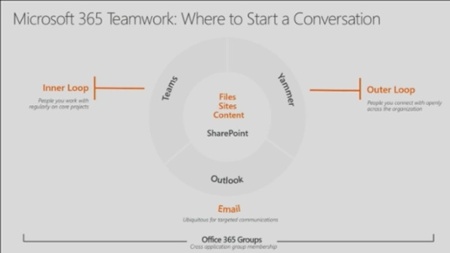Microsoft Ignite 2017 has come and gone, and with it we have some of most significant announcements in almost two years. In my decade of working with SharePoint and related products, I have never seen so many announcements over such a short amount of time.
Before Ignite I wrote a post outlining the kinds of things Withum would like to see discussed at the conference. I will use those same headings to follow up with what we saw.
Where Modern Sites Are Going
Modern sites in SharePoint saw the most significant announcement concerning SharePoint, and that announcement was the reveal of SharePoint “Hub Sites.” These sites are meant to be a central “hub” for related modern sites. This allows administrators to specify a site as a hub and then associate other modern sites with that hub. There can be many hubs, but there is currently no nesting available for hubs.
Hub sites bring two advantages: a navigation solution that ties other hub sites together, and if you specify a theme for a hub site the associated sites also receive that theme. It is a very significant announcement for the future of modern sites, and it becomes more significant since the SharePoint team wants to move away from the classic site/sub-site model. From now on, it seems, individual site collections are the way forward. It is important to note that Hub Sites are slated for Targeted Release (the newly announced name for “First Release”) until “the first half of calendar year 2018.”
The extensibility of SharePoint modern sites also had a couple of important announcements. The first of which is a new theming engine to change the colors, fonts, and more. The second major extensibility option is a new site templating engine to customize the types of modern sites that get created for your organization.
The SharePoint Framework and UI Fabric
The SharePoint Framework had several sessions, and it is good to see the investments and expansions that are made to the Framework. Microsoft has now made tenant-wide deployments of SharePoint Framework customizations much easier, and eventually they will ship the ability to scope the deployment through the app catalog.
But the most important announcement is that UI Fabric will soon be integrated into the SharePoint Framework. Microsoft’s UI Fabric is their pattern, style, and interaction library to build customizations for modern sites. If you are not familiar with UI Fabric now is a good time to learn about it because it is the future of programmatic extensibility for Office 365.
Microsoft Graph & Delve
It appears that the Microsoft Graph is the main extensibility option for much of Office 365. Microsoft has doubled-down on their usage of the Graph to power their new search experiences. While it is exciting to see machine learning factor into search results, it’s important to note that currently there is very little extensibility in the new search experiences. Most of our clients are used to creating search refiners and scoping their searches to a certain subset of content, but currently there are no plans to offer this in the modern search experience.
Yammer Is Still a Thing
I mentioned in my previous post that I was concerned about the future of Yammer, but in the Yammer roadmap session Microsoft has demonstrated their commitment to the application. Many great announcements including a unified profile for Yammer with Delve, posting improvements, and expanded options for moderating your Yammer usage.
Perhaps the most important revelation was Microsoft’s attempt to bring clarity on when to use which application in Office 365. Microsoft unveiled new language around “inner and outer loops.” This language is meant to bring clarity on when to use a tool like Microsoft Teams (the “inner loop”) for smaller groups of collaboration and Yammer (the “outer loop”) for wider dissemination and knowledge transfer.

Microsoft Teams
As rumored before the conference, Microsoft has announced that Skype for Business and Microsoft Teams are going to merge. While this will happen gradually, it is important to start getting Microsoft Teams into your organization so they can be familiar with the new conventions of Teams. Teams is no longer just one option for collaboration in Office 365, but it seems to be a significant focus going forward.
Final Thought
This is just a taste of the announcements that were made at Ignite. Join Daniel Cohen-Dumani and me for a webinar on October 4th at 11:00am ET where we’ll share more of the announcements and the implications for your usage of Office 365. You can register online now.


